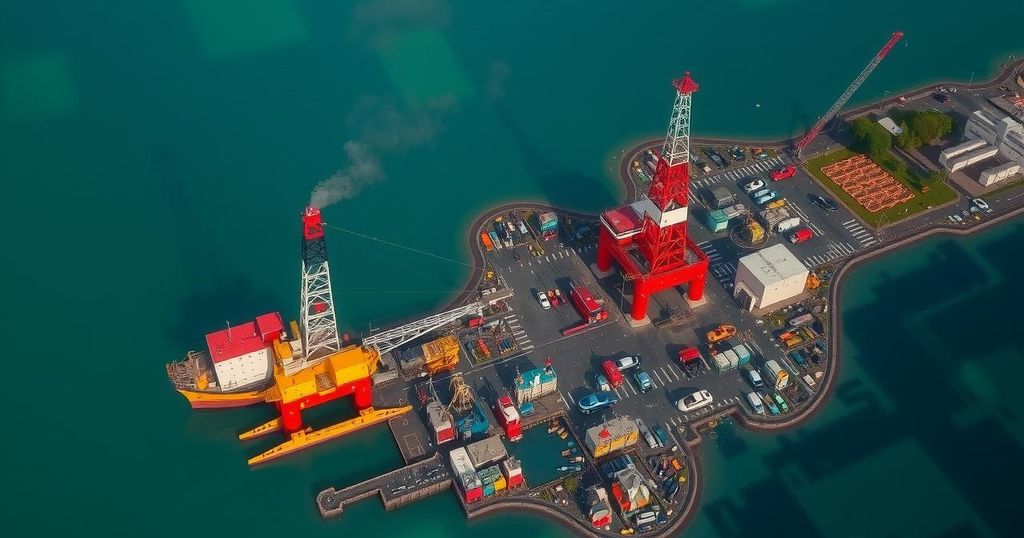Suriname and Guyana face significant climate challenges accelerated by fossil fuel reliance, seeking adaptation funding through oil extraction profits. Suriname emphasizes sustainable development while addressing vulnerabilities, whereas Guyana’s economy rapidly transforms due to oil revenues, aiming to finance climate adaptation measures. Both countries reveal the paradox of relying on fossil fuels to mitigate climate impacts, highlighting their unique struggles.
In Baku, Marciano Dasai, the environment minister of Suriname, advocates for the nation’s climate resilience at COP29. This small Caribbean nation, with a population of over 600,000, faces severe climate challenges, including flooding, droughts, and rising sea levels threatening coastal habitats. Suriname’s adaptation to these crises requires substantial financial resources, which, unfortunately, are not being fully provided by wealthier nations that share greater responsibility for the climate crisis.
Minister Dasai expressed concern over the severe drought affecting Brokopondo, highlighting the absence of water in rivers traditionally used for transport. Despite Suriname’s status as a minor oil producer, it remains carbon negative due to its extensive rainforests. Currently, the government allocates scarce budgetary resources toward adaptation efforts while awaiting the operationalization of the UN carbon credit system for potential funding from forest conservation.
President Chandrikapersad Santokhi’s development strategy advocates for “sustainable and responsible” offshore oil extraction, eyed to generate USD 1 billion annually while creating 6,000 jobs. Central to this strategy is the USD 10 billion GranMorgu project, which aims to produce 220,000 barrels of oil per day beginning in 2028. The project, in collaboration with TotalEnergies and APA Corporation, includes provisions that Suriname will maintain carbon neutrality through its forests.
Simultaneously, Guyana faces analogous challenges, having transitioned from poverty to a burgeoning petrostate due to its vast oil reserves primarily developed by ExxonMobil since 2019. With expectations to achieve significant oil output per capita by 2027, Guyana’s economy has surged dramatically, showcasing a 60% GDP increase within just one year.
Despite potential financial gains, both nations grapple with climate vulnerability, compounded by socio-economic challenges exacerbated by climate change impacts. In Guyana, oil revenues are expected to help fund significant infrastructure improvements to combat flooding, rising sea levels, and other challenges linked to climate adaptation. This approach underscores the dual role fossil fuels may play in both energizing economies and addressing climate resilience, marking a contentious yet pragmatic strategy for developing nations facing existential threats from climate change.
Suriname and Guyana, two nations characterized by their rich biodiversity and vulnerability to climate change, face pressing economic and environmental challenges. Both countries rely on their extensive rainforests, which embellish their status as carbon sinks, while simultaneously exploring offshore oil reserves to finance development and climate adaptation measures. The stark contrast between their current economic statuses and the crucial need for climate resilience sets the stage for a complex narrative regarding how fossil fuel exploitation intersects with sustainable development, particularly in the context of climate finance negotiations.
In conclusion, both Suriname and Guyana illustrate the delicate balance between economic development through fossil fuel extraction and the pressing need for climate adaptation. As they seek external funding and navigate the complexities of oil revenues, their strategies reveal a challenging reality: for some developing countries, reliance on oil profits is a necessary yet contentious path toward building resilience against climate-induced crises.
Original Source: www.renewablematter.eu






